What’s up ?
2025:
- (07-11/04/2025) Talk “A new class of force-free semi-analytical solutions of the twisted magnetar magnetosphere” at Feeling the pull and the pulse of relativistic magnetospheres, Les Houches, France
2024:
- (07/11/2024) Invited talk “Journées théories du PNHE“, Paris, France
- (22/08/2024) Invited talk “Electrodynamics of neutron-star magnetospheres: focus on quantum effects” at the French-German WE-Heraeus-Seminar: Developments, Problems, and Extensions of Electrodynamics, Bad Honnef, Germany
- (16/05/2024) « Geometrical envelopes of Fast Radio Bursts », Bonn workshop on « Advancing pulsar science: opportunities, challenges & mysteries », Germany
September 2023:
- Talk “Geometrical envelope of fast radio bursts” at Journées du PNHE, IAP, France.
- Colloquium “What can be learnt from unusual pulsar systems” at LPC2E, Orléans, France.
June 2023:
- Paper “Geometrical envelopes of Fast Radio Bursts” published (hal);
- Animation illustrating the model relating FRB dynamic spectra with magnetospheric dynamics;
- Slide of flash talk given at the SF2A 2023 meeting available.
About me
I am an astrophysicist working for the CNRS at Laboratory Universe and Theories (LUTH) of Paris Observatory (Laboratoire Univers et Théorie, Observatoire de Paris). My research focuses on a type of stars called pulsars, which are highly magnetized rotating neutron stars or, more poetically, cosmic lighthouses. I am developing analytical and numerical models in order to enable us to use neutron stars as experimental setups to study extreme physics, from gravitation to ultra-dense matter through quantum electrodynamics. More recently I am also interested in Fast Radio Bursts, extremely bright short signals, proposing models under the assumption that they are produced by neutron stars.
If you don’t know what pulsars are:
Neutron stars are the collapsed cores of some massive stars after they explode in supernovae, and are the densest astrophysical objects we know of, weighting ~ 1.4 solar masses for a diameter of only ~25km. Had they collapsed further down, they would have formed a black hole, for which the notion of density is no longer defined. On the other hand, their magnetic field can be 100 billion times stronger than the magnetic field of the Earth. This creates an environment, the magnetosphere, in which utterly exotic phenomena can happen, whereby light is transformed into matter and matter into light. In particular, this results in a beam of light above the magnetic poles which, together with the rotation, makes the star appear to pulsate as the light passes on and off our line of sight. The environment of these stars contains physics that cannot be tested in the Solar system, let alone on Earth. Studying them is therefore a unique window on some of the most fundamental aspects of Nature.
My work
See the dedicated page for a more complete list of my activities. At a glance:
- Quantum electrodynamics processes in pulsar magnetospheres: understanding the theory behind light-matter interactions in these extreme environments.
- Test of gravity through pulsar timing: studying the motion of a pulsar in orbit with other stars, we obtained with my collaborators one of the most compelling tests of the theory of gravity, general relativity.
- Extreme pulsar-companion interaction: studying a type of pulsar nicknamed “Spiders”, where the pulsar is literally irradiating, deforming, and evaporating its companion star.
- Fast radio bursts: proposing models to explain these fantastic bursts of radio waves.


